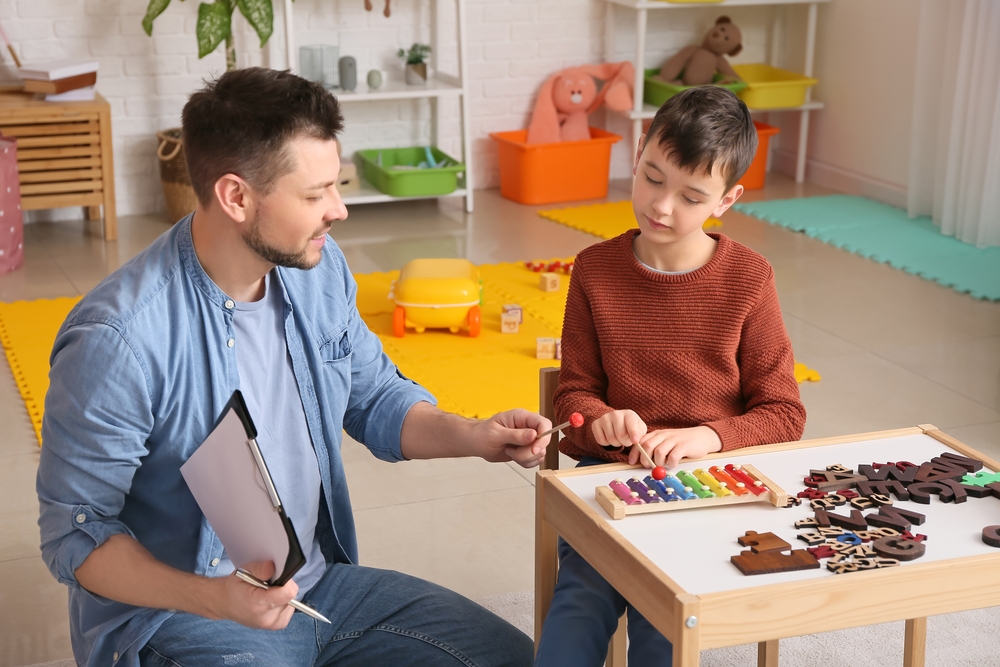
Sensory Therapy for Students with Autism in the Classroom
Schools can be an overwhelming environment for students with Autism. Sensory overload can lead to distraction during class, which limits participation and leads to distress. Therapists who work alongside Pediatric Therapeutic Services (PTS) offer sensory therapy for children in classrooms with Autism to help them adjust and improve their ability to learn in classrooms with their classmates.
Sensory Therapy in Classrooms Can Help Children with Autism Learn Self-Regulation
Sensory therapy can be an essential tool in teaching children with Autism how to self-regulate. Self-regulation can help improve learning outcomes because students can use this regulation to refocus on a lesson and stay with their class to learn.
A therapist can help teachers create sensory-friendly spaces and sensory therapy lessons that fit within your class schedule. Reducing the sensory overload for students with autism benefits all students and helps everyone learn together.
Sensory Therapy Exercises for Classrooms
There are many sensory therapy exercises that can be integrated into classrooms as accommodations and group activities.
Regular Movement Breaks and Stim Toys
Some students with Autism may find it overstimulating to sit still for long periods of time. Regular movement breaks can help release pent-up energy or discomfort.
Introducing subtle stim toys or alternative seating options like yoga balls can also help students get out some energy while they learn.
Creating Art
Taking time to create some art can help students engage in sensory therapy. Using different materials, such as paint, and ways to create—like fingerpainting- allows students to experience different textures while creating. Offering choices in art projects can also help students try new things or select something that is sensory-friendly to them.
Create a Calming Corner
Designate a part of your classroom to be a calming corner. This section should have comfortable seating, soft lighting, and sensory tools that allow your students to take a break when they feel overstimulated.
Since it’s in the same room, a therapist or teacher can check on the student and monitor them in case they need further support. They can also choose to listen along and rejoin the lesson when ready.
Using the Multi-Tiered Systems of Support to Add Sensory Therapy to Classrooms
When PTS partners with a school, we use a Multi-Tiered Systems of Support (MTSS) approach to support students in the Least Restrictive Environment (LRE) while delivering the attention they need. A MTSS approach provides three tiers of support:
- Tier 1: classroom-level supports
- Tier 2: Short-term, small-group support
- Tier 3: individual therapeutic support
Sensory therapy can be integrated into any of these tiers to help students with Autism—and all students—self-regulate and engage more in learning. Students who need additional sensory therapy can receive Tier 2 or Tier 3 supports as pull-out sessions when needed, and rejoin the rest of the class when it is ideal.
Integrate Sensory Therapies into Your Classroom
If your classroom is interested in integrating sensory therapies into your classroom to help your students with Autism, therapists who work alongside PTS can help. Using an MTSS and whole-child approach to integrate therapeutic tools into classroom lessons, your students with autism can learn how to self-regulate better and thrive with the rest of their class. Contact PTS to learn more today.



